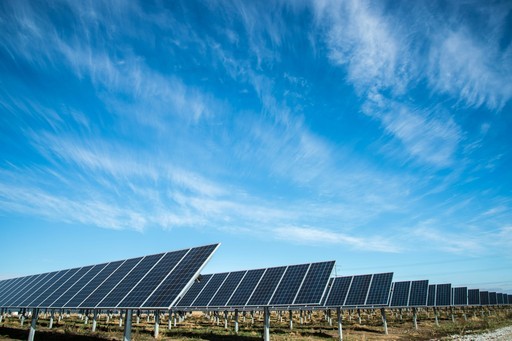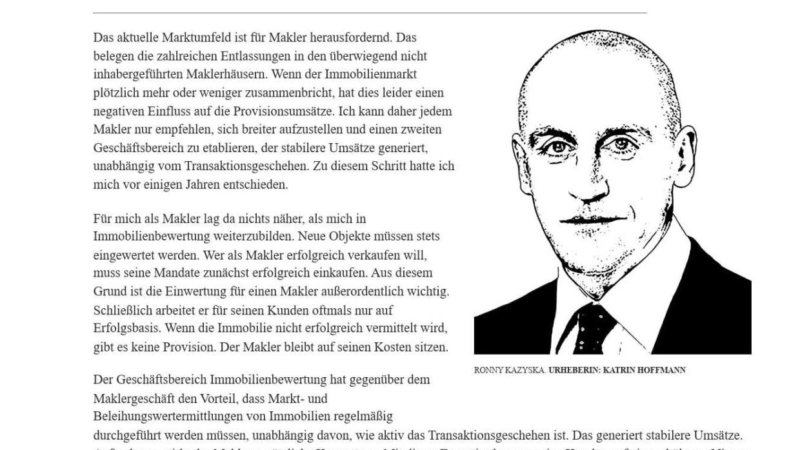The Construction Price Spiral as a Challenge for the Real Estate Market – Discussion Contribution by Daniel Slenters, Managing Partner of ETERRA-Group from Magdeburg.
The real estate market, once a haven of stability, is now facing turbulent times. Prices for building materials have increased significantly in the first half of the year. Cement alone has become 41.7 percent more expensive, according to the Federal Statistical Office. The consequences are drastic: The Federal Association of Independent Real Estate and Housing Companies (BFW) warns of a construction crisis of historic proportions. Dirk Salewski, president of the association, cautions, „Surgery is needed, or the patient-housing construction-will die.“ But what factors are driving this cost explosion, and how do they affect the real estate market?
Building Materials Price Fight: A Differentiated Picture
The price increases are widespread. Mineral building materials such as lime and calcined gypsum rose by 39.7 percent, while metal building materials decreased by 4.6 percent. A contradiction? Not really. Reinforcing steel costs 28.5 percent less, whereas steel pipes increased by 6.3 percent. Bitumen based on petroleum decreased by 13.0 percent, while sanitary fittings became 10.8 percent more expensive. This heterogeneity highlights the complexity of the links between raw material markets and the real estate sector.
The Symbiosis of Raw Materials and Real Estate
The interconnection between raw material markets and the real estate sector is complex. Environmental impacts, such as massive wildfires in North America or bark beetle infestations in Central Europe, can shift the supply and demand for raw materials. For example, the construction boom in North America and China created high demand for timber, while in Germany, an oversupply led to export constraints. This dynamic illustrates how environmental impacts and global construction activities influence raw material prices, thereby driving up real estate costs.
Raw Material Prices as Cost Drivers in the Construction Industry
Basic building materials like steel, concrete, and wood are essential, but their prices are volatile. Sven Bading from ETERRA Group emphasizes that the planning of construction projects is heavily influenced by this volatility. The lack of predictability, especially during raw material shortages, leads to construction delays and unpredictable cost increases. Investors face a dilemma: rising prices, extended construction times, and shrinking margins.
In addition to interest rates, construction costs significantly influence real estate prices. In the first half of 2023, prices for building materials remained at a high level, leading to a decline in construction activities. Sven Bading highlights that especially the cost increases in mineral building materials such as cement, lime, and gypsum, as well as construction supplies made of plastics, were significant. These rises in the construction sector directly affect the costs of new residential properties, thereby increasing the end prices for potential buyers. „The rising construction costs influence not only the prices of new buildings but also can make renovations and refurbishments of existing buildings more expensive, which in turn affects the entire real estate market,“ adds Bading.
Early Indicator of Market Dynamics
The impact of interest rates and construction costs on German real estate prices is crucial for current market dynamics. The recent interest rate hikes by the European Central Bank (ECB) have initiated a noticeable turnaround in the German housing market by drastically reducing the financing scope for many prospective buyers, leading to a decrease in housing demand and a decline in prices. This development emphatically underlines how much real estate prices depend on financial conditions and interest rate policies. The real estate market is highly sensitive to changes in the interest rate environment, highlighting the need for careful financial planning and calculation. The economic research institute also shows that the price development of raw materials is an early indicator of macroeconomic trends. In times of economic uncertainty, investors can gain valuable insights into future developments by monitoring raw material prices. The development of raw material prices allows for forward-looking planning and anticipating potential challenges.
The Domino Effect on the Real Estate Market
Amidst a changing real estate market, a complex domino effect is emerging, triggered by the effects of raw material prices. Rising interest rates, coupled with higher construction costs and inflation-induced purchasing restraint, lead to a tense situation that poses financial challenges for many potential buyers. „Under these conditions, many have to postpone or even give up the dream of owning their own home,“ says Bading.
The ifo Institute predicts a dramatic decline in housing construction in Germany, expecting only about 245,000 completed dwellings in 2023, and even fewer in the following years, with just 210,000 in 2024 and approximately 175,000 in 2025. The causes lie in the significant increase in financing and construction services costs, accompanied by a reduction in new construction subsidies by the federal government and stricter standards for new construction. This leads to many developers not initiating new projects, and existing orders often pertain to already advanced projects. Sven Bading points out that paradoxically, construction projects in the high-priced segment continue, as for their clientele, the increased costs are less significant. This impressively illustrates how changes in conditions and the decline in real estate prices affect the new construction business and the housing market in Germany. In the 3rd quarter of 2023, prices for residential properties fell by 10.2 percent, marking the sharpest decline since 2000 and a direct reflection of the price spiral in the construction industry on the real estate market.
Maintaining a Balance between Supply and Demand
The renowned expert Sven Bading underscores the importance of maintaining a balance between supply and demand in the real estate market. A stable supply of affordable raw materials promotes the development of real estate projects. On the other hand, price increases can lead to a decrease in demand. Accurate market analysis and adaptation to current needs are crucial for long-term success.
Investment Security and Diversification
Given the complexity of the relationship between raw material prices and the real estate market, investors are looking for strategies to protect their portfolios. Diversification, the distribution of investments across different asset classes, is an effective method. Research results show that diversification is a crucial factor for long-term investment success.
Understanding and Proactively Acting on Interactions
Understanding the interactions between raw material prices and real estate investments requires deep knowledge and a proactive approach. The dynamics of raw material markets must be understood and flexibly responded to in order to secure long-term success in the real estate industry. Companies and investors face the challenge of adapting to constantly changing economic conditions. Accurate analysis of raw material prices and a diversified investment strategy are essential to minimize risks and ensure long-term success.
Author: Daniel Slenters
ETERRA Ibera SL is an innovative and future-oriented real estate company from Magdeburg that is committed to sustainable living. The company offers a wide range of services and works closely with its customers and investors to meet individual needs.
Contact
ETERRA Ibera SL
Matthias Claßen
Carrer Illes Canàries The Circle
07183 Santa Ponça
Phone: +49 151 615 6666 4
E-Mail: 
Url: https://www.eterragruppe.com/
Die Bildrechte liegen bei dem Verfasser der Mitteilung.







